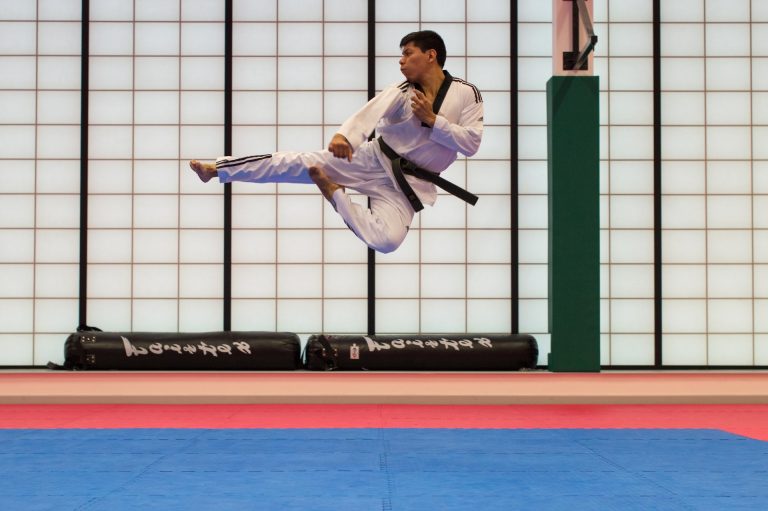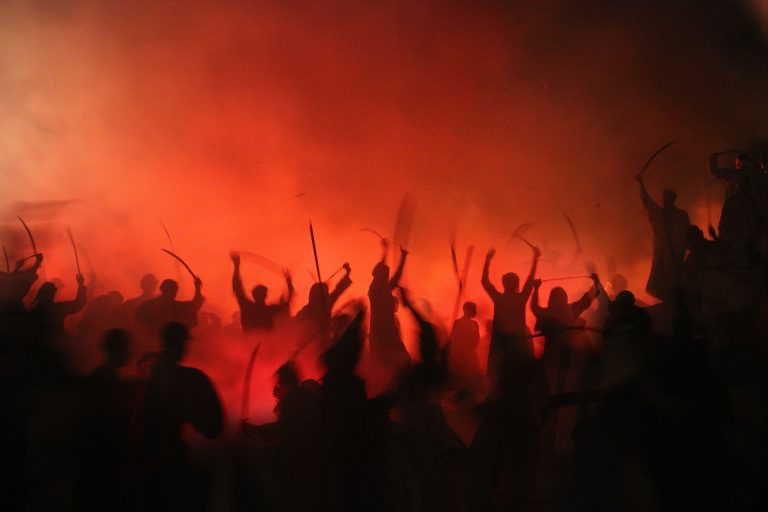How Many Color Belts are There in Karate? An Overview of Karate Belt System
Karate is a popular martial art with roots in Japan. It is known for its striking techniques, such as punches, kicks, and elbows, and emphasizes on self-defense, discipline, and respect.
One of the most recognizable symbols of a karate practitioner’s progress is the colored belt worn as a part of the karate uniform (gi). These belts represent the student’s current level of expertise and the goals they have achieved throughout their karate training.
In this post, we’ll discuss everything you need to know about the karate belt system, how many color belts there are, and what each color signifies.
The History and Significance of Karate Belt System
Karate is an ancient martial art that has been practiced for centuries in various forms. The belt ranking system, however, was developed in the early 20th century by Jigoro Kano, the founder of Judo. Later on, this belt system was adopted by other martial arts, including karate.
The belt system is an essential aspect of the karate training process. It provides structure and motivation for the students and a clear path for their progress. Each belt level represents a milestone in the student’s journey and shows the student’s dedication to the art.
The Karate Belt System
The karate belt system consists of two main categories: kyu and dan. The kyu ranks signify the student’s progress before achieving the black belt (dan), which is the highest belt rank in karate.
The kyu belt system consists of ten levels, starting from white belt (no rank) to brown belt. The colors used in the kyu belt system may differ slightly among different karate styles but follow a similar hierarchy.
White Belt – No Rank
The white belt is the first belt a student wears when they enter a karate dojo (training hall). It signifies that the student is a beginner and has no previous experience in karate. White belt symbolizes the starting point of the student’s journey towards mastery.
Yellow Belt
The yellow belt is the first official rank that a student can achieve in karate. It represents the student’s development from a beginner into a more dedicated student. The yellow belt signifies that the student has learned the basics of karate and is ready to start training more advanced techniques.
Orange Belt
The orange belt is the second kyu rank in the karate belt system. It represents the student’s progress in developing their techniques and skills. The orange belt also signifies that the student has started to develop the proper mindset and discipline that is required for karate training.
Green Belt
The green belt is the third kyu rank in the karate belt system. It represents the student’s improvement in terms of technique, power, and knowledge of karate. The green belt signifies that the student has started to understand the importance of balance and control in karate training.
Blue Belt
The blue belt is the fourth kyu rank in the karate belt system. It represents the student’s progress towards mastery of karate techniques. The blue belt signifies that the student has started to master the art of karate and understands the essence of balance, focus, and timing in their training.
Purple Belt
The purple belt is the fifth kyu rank in the karate belt system. It represents the student’s dedication to becoming a skillful and successful karate practitioner. The purple belt signifies that the student has achieved a level of proficiency in their karate techniques and is ready for more advanced training.
Brown Belt
The brown belt is the last kyu rank in the karate belt system. It represents the student’s final stages before achieving the black belt (dan). The brown belt signifies that the student has achieved a high level of skill and expertise in their karate techniques and is ready to start training for the black belt.
The Meaning of the Black Belt (Dan)
The black belt (dan) is the highest rank in the karate belt system. It is the ultimate goal for every karate practitioner to achieve the black belt. However, achieving the black belt does not mean that the karate journey ends; in fact, it is just the beginning of another stage.
The black belt signifies that the student has achieved mastery of the basic karate techniques and has developed a deeper understanding of the martial art. It represents the student’s commitment to their karate practice both on and off the mat.
How Many Color Belts Are There in Karate: Answering FAQs
Introduction
Karate is a popular martial art that originated from Japan. It is known for its numerous techniques that involve punches, kicks, and strikes. The practice of karate can help develop strength, flexibility, confidence, and discipline. One of the important aspects of karate is the ranking system which is indicated by different colored belts that signify different levels of proficiency. In this article, we will answer some of the frequently asked questions about the color belts in karate.
FAQs
1. How many color belts are there in karate?
In most karate organizations, there are nine color belts, also known as kyu ranks, that a student must go through before earning the black belt. The color belts are white, yellow, orange, green, blue, purple, brown, red, and black.
2. What is the significance of the white belt in karate?
The white belt is the starting point of every karate student. It symbolizes purity, innocence, and a willingness to learn. It also represents a blank slate, which means that the student has no knowledge or experience in karate yet.
3. How long does it take to progress from one belt to another?
The time it takes for a student to progress from one belt to another may vary depending on the karate organization and the individual’s training frequency and ability. Generally, it takes 3-6 months to progress from a white belt to a yellow belt, and 6-12 months to progress to the next rank. The higher the rank, the longer it usually takes to progress.
4. How is the proficiency of the student tested for each belt?
Each karate organization has its own testing requirements for each belt. Typically, the testing involves demonstrating proficiency in basic techniques, katas (pre-arranged forms), sparring, self-defense, and other skills. There may also be written or oral exams.
5. Is it necessary to earn all the color belts before earning the black belt?
Yes, it is necessary to earn all the kyu ranks before earning the black belt. Skipping any of the ranks is not allowed in traditional karate. Each rank serves as a foundation for the next, and skipping a rank may lead to gaps in knowledge and skills.
6. What are the benefits of earning a color belt in karate?
Earning a color belt in karate signifies progress, dedication, and achievement. It shows that the student has put in the time and effort to learn and improve their skills. It also provides motivation for the student to continue training and pushing themselves to new levels. In addition, it may open up opportunities for competitions and other martial arts events.
7. How does one maintain their proficiency after earning a black belt?
Maintaining proficiency in karate is a lifelong endeavor. Even after earning the black belt, a practitioner must continue training and refining their technique. They may also want to learn from other instructors or styles to broaden their knowledge. Teaching and sharing one’s skills with others can also help maintain proficiency.
How Many Color Belts Are There in Karate – A Guide for Beginners?
One of the most attractive aspects of Karate is the symbolic representation of a practitioner’s prowess through a series of colored belts. The journey begins with a white belt and ends with a black belt with different colors for different levels in between. If you are curious about how many color belts are there in Karate and what they represent, then this guide is for you.
What are the Different Color Belts in Karate?
Karate has a total of nine different color belts. Here is the list of these belts, starting from beginner level up to advanced level:
- White Belt
- Yellow Belt
- Orange Belt
- Green Belt
- Blue Belt
- Purple Belt
- Brown Belt (1st Kyu)
- Brown Belt (2nd Kyu)
- Brown Belt (3rd Kyu)
- Black Belt
As a student progresses from the beginner level, each level of the color belt represents a higher level of skill, experience, and knowledge. The different colored belts, therefore, serve as milestones of success for a student as they progress through the ranks.
What Do the Different Color Belts in Karate Represent
Each color belt represents a different stage of development in a student’s training. Here is a quick breakdown of what each color means in Karate:
White Belt (Beginner)
A white belt is awarded to a beginner Karateka who is just beginning the journey to learn Karate. It signifies purity, innocence, and a lack of knowledge in Karate.
Yellow Belt (9th Kyu)
The yellow belt signifies the first step on the path to mastery in Karate. Students at this level are expected to have a basic knowledge of Karate and are ready to take on more advanced learning.
Orange Belt (8th Kyu)
The Orange belt represents the growing understanding of the basics of Karate while standing out as a symbol of self-confidence.
Green Belt (7th Kyu)
The Green Belt signifies growth and outward expression of personal progress while demonstrating the ability to be steadfast in executing the techniques of Karate.
Blue Belt (6th Kyu)
The Blue Belt represents the student’s aspiration to advance beyond the elementary stages of knowledge in Karate. It also suggests open-mindedness in knowledge acquisition and thirst for new knowledge.
Purple Belt (5th Kyu)
The Purple Belt indicates a time when a learner begins mastering new things out of the classroom and setting new standards for other Karate students.
Brown Belt (1st Kyu, 2nd Kyu, and 3rd Kyu)
Before achieving the ultimate level of Karate mastery by becoming a Black Belt, students have to progress through three different levels of Brown Belts.
The three different shades of Brown Belts represent the gradual increase in knowledge of the practical application of Karate as well as a firm determination to achieve the ultimate goal of being a Black Belt. These levels signify the very top of the ranks of Kyu level and are regarded as the highest ranking belts that a Kyu student may attain.
Black Belt (1st Dan)
The Black Belt represents complete knowledge and mastery of all levels that have been taught in Karate. It signifies significant progress after years of dedication, determination, and hard work.
Maintaining Progression Through the Belt Ranks in Karate
Practitioners of Karate are required to meet certain criteria to achieve the next belt, which varies from school to school. However, to achieve the Black Belt, students must go through a rigorous training program, often taking years of dedicated practice and schooling.
It’s important to note that achieving a Black Belt is not the end of the road for a Karate practitioner. It is just the beginning of the journey to achieve greater feats of knowledge, technique, and skill in Karate.
Final Thoughts
Karate represents one of the most popular and easily recognizable martial arts with an impressive representation of progress through different color belts. With this guide, you now know a little bit more about what each of the different colored Karate belts represents and what you can expect to work towards as you progress through the ranks of Karate.
Remember that hard work, dedication, and practice are the key components to a successful Karate journey.
Inhaltsverzeichnis






